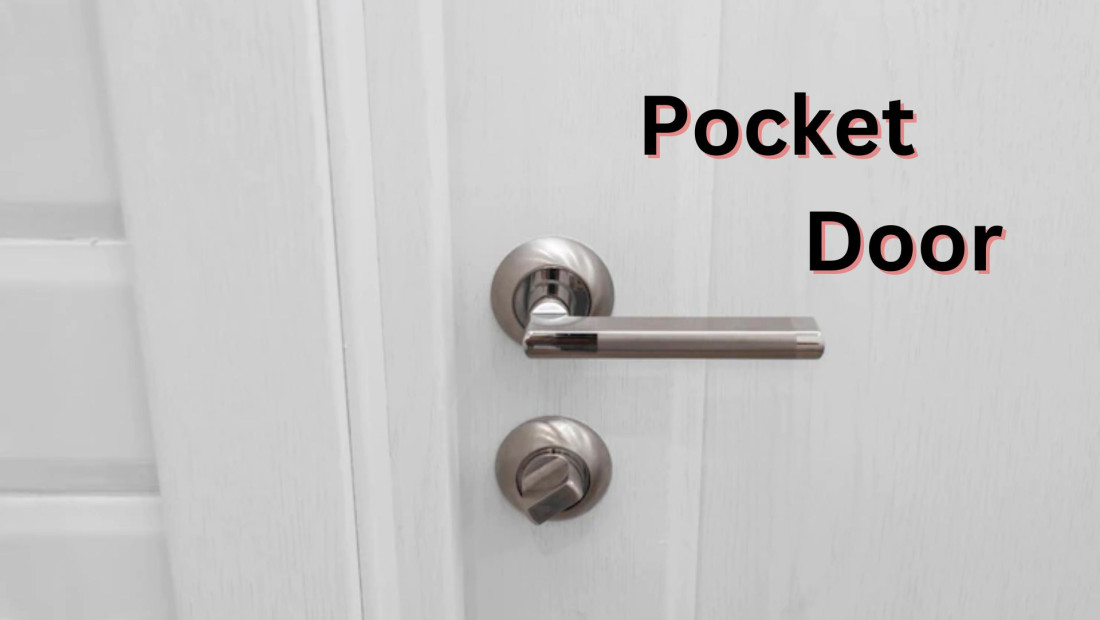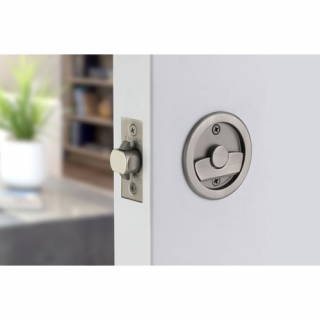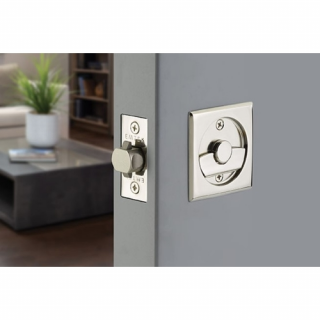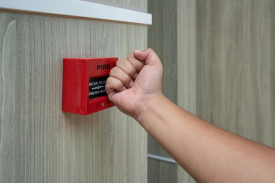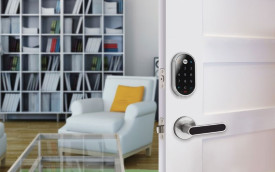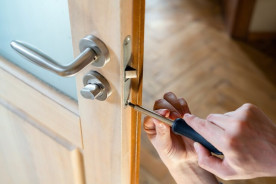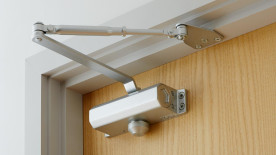Need to install pocket door hardware, such as a pull handle? Keep reading.
Pocket doors are an excellent solution to saving space in your home. Beyond creating the cutout itself and mounting the frame, installing pocket door hardware is essential to creating a functioning pull-out door. This type of door requires unique door pulls and latches that fit snugly against the door’s surface.
Though there are a few different styles to choose from, traditional pocket door pulls that have a grooved finger notch are the most common. Regardless of your choice, you will need to follow a similar procedure to install the pocket door hardware that involves a bit of cutting and drilling.
Mark the Cuts
Begin by marking the cuts on the edge of the door where the latch and door pull will sit. Be precise in this step in the hardware installation process. The cut should be exact since there is little forgiveness in a cut that is even a few centimeters off. You can always make the cut bigger, but you can’t make it smaller.
Begin Cutting With a Jigsaw
Once you finalize the markings, grab a multi-tool like a jigsaw and begin cutting out the notch for the pocket door hardware. Remember not to cut all the way through the door from one side. Cut halfway through on one side and then halfway through on the other side.
Secure the Hardware
Finally, slide the hardware in place. This is where you might need to drill holes for wood screws to secure the hardware in place. Grab your screwdriver and power drill to make final adjustments and attach components together.
Commonly Asked Questions About Pocket Door Hardware Installation
Q: Do pocket doors need door hardware?
Yes, just like all other doors, pocket doors need hardware too. However, pocket doors need special hardware that hugs the door, enabling it to easily slide into and out of the pocket.
Q: What tools do I need to install pocket door hardware?
If you choose to install pocket door hardware yourself, you may need tools like a screwdriver, jigsaw, measuring tape, pencil for light markings, and a power drill.
Q: Can pocket doors have handles?
Pocket doors cannot have handles that jut out beyond the depth of the pocket cutout. Traditional knobs and levers will catch on the wall and prevent the door from sliding into the pocket all the way. Instead, pocket doors typically have thin latch plates and pulls.
Secure Your Space With Park Avenue Locks
Keep your commercial space safe by choosing the right door locks and door safety hardware for your office, building, or warehouse. If you don’t know where to start when choosing the correct locks and hardware for your doors, then Park Avenue Locks will guide the way.
We specialize in high-security, heavy-duty door locks and door hardware in various finishes. Our inventory frequently changes to make room for the newest models and most exceptional pieces. Call us at 332-600-4046 or contact us for personalized assistance.

